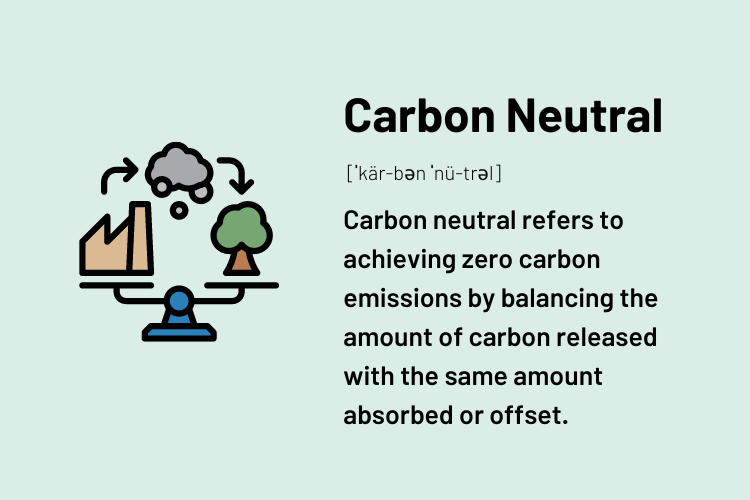
What is carbon neutral?
The term carbon neutral refers to a zero sum calculation of carbon emissions for any process, product, business, system, person, or even country.
In other words, something that is carbon neutral, also referred to as having a net zero carbon footprint or climate neutral, offsets as many carbon emissions as it emits. Carbon neutrality doesn’t refer only to carbon dioxide emissions but to any greenhouse gas emission that contributes to global warming, usually measured in carbon dioxide equivalence.
Calculating the carbon footprint of an entity
Determining an entity’s carbon footprint is the first step to going carbon neutral, and usually involves a carbon calculator – simple or complex, depending on the application.
A carbon calculator measures the carbon emissions impact of various operations and activities and comes up with a total carbon footprint. Carbon offsets, renewable energy, and carbon sequestering can then be used to “neutralize” – physically or symbolically – part or all of the carbon emissions made. Some simple examples to help you achieve carbon neutrality are:
- Reducing energy consumption
- Producing renewable energy
- Buying carbon offsets
- Sequestering carbon
Frequently asked questions (FAQs)
What is carbon neutral?
The term “carbon neutral” refers to achieving net zero carbon emissions by balancing the amount of carbon released with an equivalent amount being absorbed or offset.
When will carbon neutrality be achieved?
Different countries have different goals as to when they achieve carbon neutrality. For example, the EU has pledged that its member countries will be carbon neutral by 2050. Whether this goal will come to fruition remains to be seen.
What is a carbon footprint?
A carbon footprint is the total amount of greenhouse gases emitted by an entity as a result of its activities. The size of an entity’s carbon footprint can be calculated using a carbon calculator, which assesses the emissions generated from various activities such as energy use and waste production.
